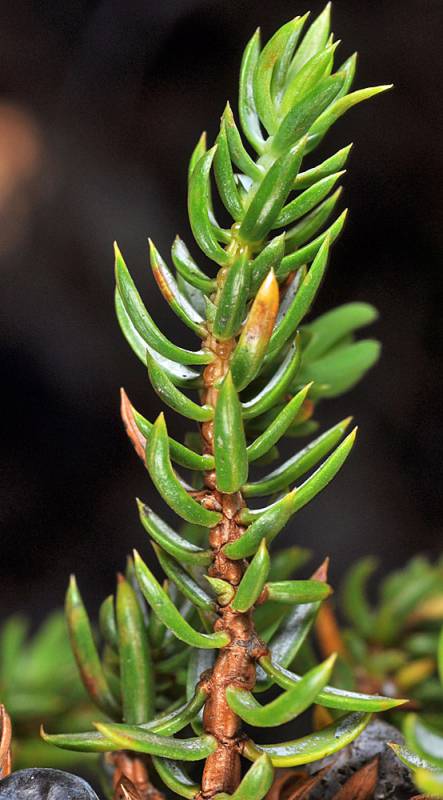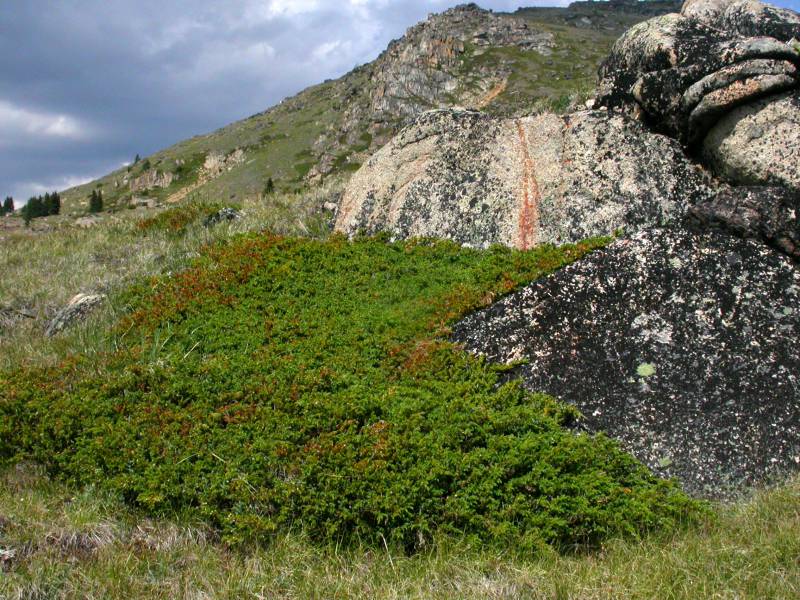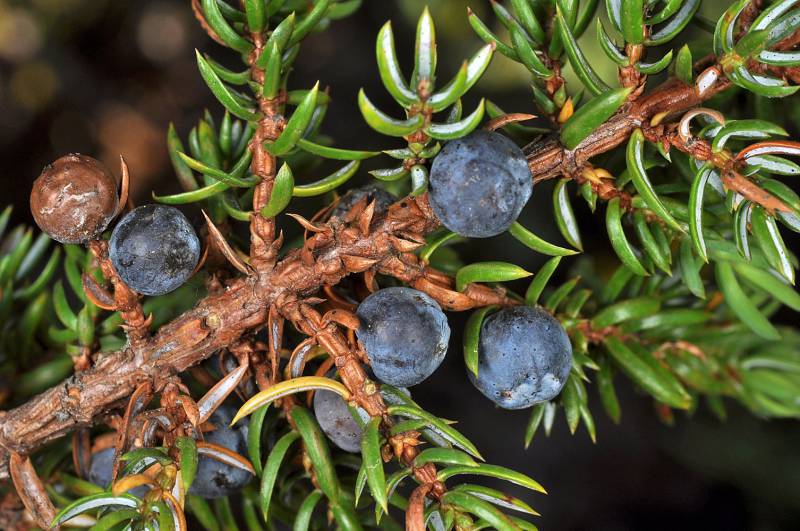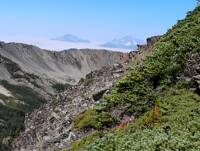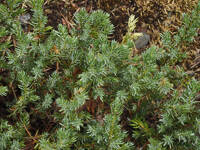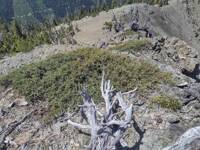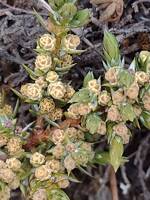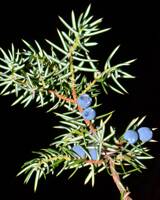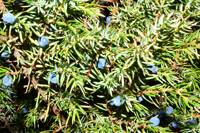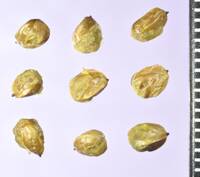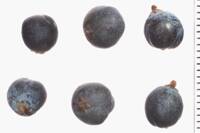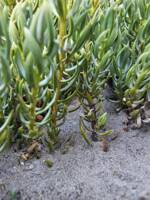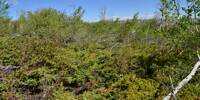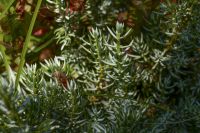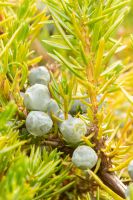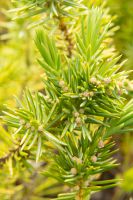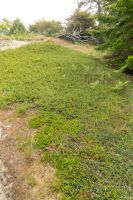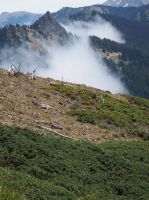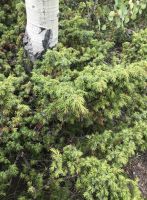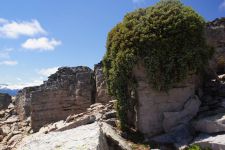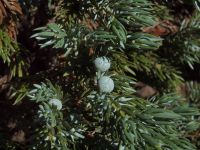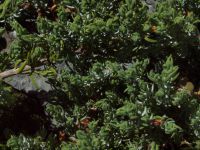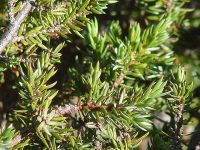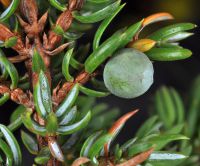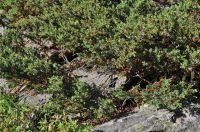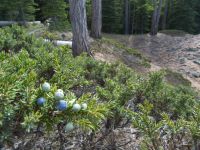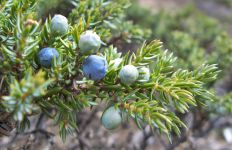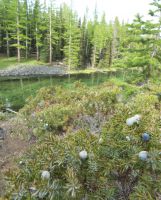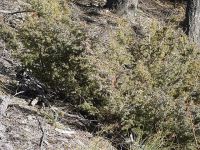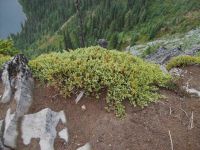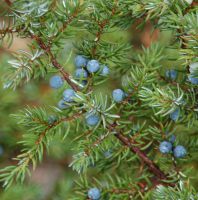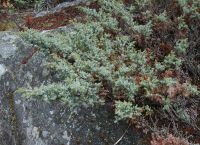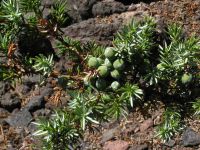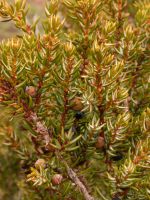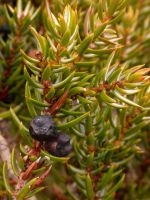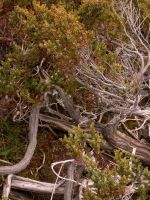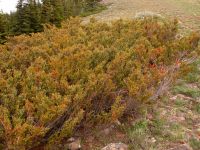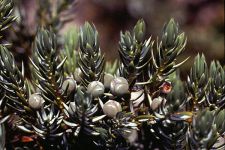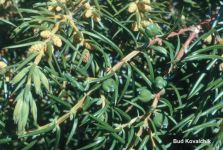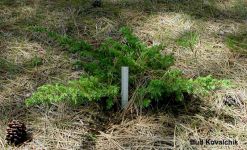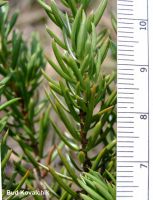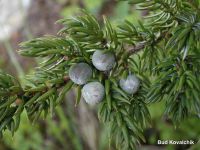Distribution: Occurring on both sides of the Cascades crest in Washington; Alaska to California, east across North America, except for the southern Great Plains and south-central U.S., to the Atlantic Coast.
Habitat: Lowland forest edge and balds to open, rocky alpine areas.
Cones: April-August
Origin: Native
Growth Duration: Perennial
Conservation Status: Not of concern
Pollination: Wind
Prostrate, dioecious shrub or small tree 1-3 m. tall.
The bark very thin, reddish-brown, shredding and scaly.
Leaves mostly in 3u00e2u20acu2122s, needle-like to narrowly lanceolate, stiff and pungent, 7-12 mm. long, jointed at the base of the free portion, concave and whitish on the lower surface, dark green above.
Staminate cones ovoid, 3-5 mm. long, with 12-16 stamens; ovulate cones maturing the second season, berry-like, bluish-black, 6-9 mm. long, 1- to 3-seeded.
Publication: Sp. Pl. 2: 1040. 1753.
-
var. depressa – common juniper, dwarf juniper, ground juniper, prostrate juniper
 Occurring east of the Cascades crest in northern Washington; Alaska to California, east to the Rocky Mountains.
Occurring east of the Cascades crest in northern Washington; Alaska to California, east to the Rocky Mountains. - var. jackii – Jack's common juniper, Jack's mat juniper Known from a single collection west of the Cascades crest in western Skamania County in Washington; Mount Hood in northern Oregon to northwestern California.
-
var. kelleyi – Kelley's common juniper, Kelley's mat juniper
 Occurring on both sides of the Cascades crest in Washington; Alaska to California, east to Alberta and Montana.
Occurring on both sides of the Cascades crest in Washington; Alaska to California, east to Alberta and Montana.
PNW Herbaria: Specimen records of Juniperus communis in the Consortium of Pacific Northwest Herbaria database
WA Flora Checklist: Juniperus communis checklist entry
OregonFlora: Juniperus communis information
E-Flora BC: Juniperus communis atlas page
CalPhotos: Juniperus communis photos

